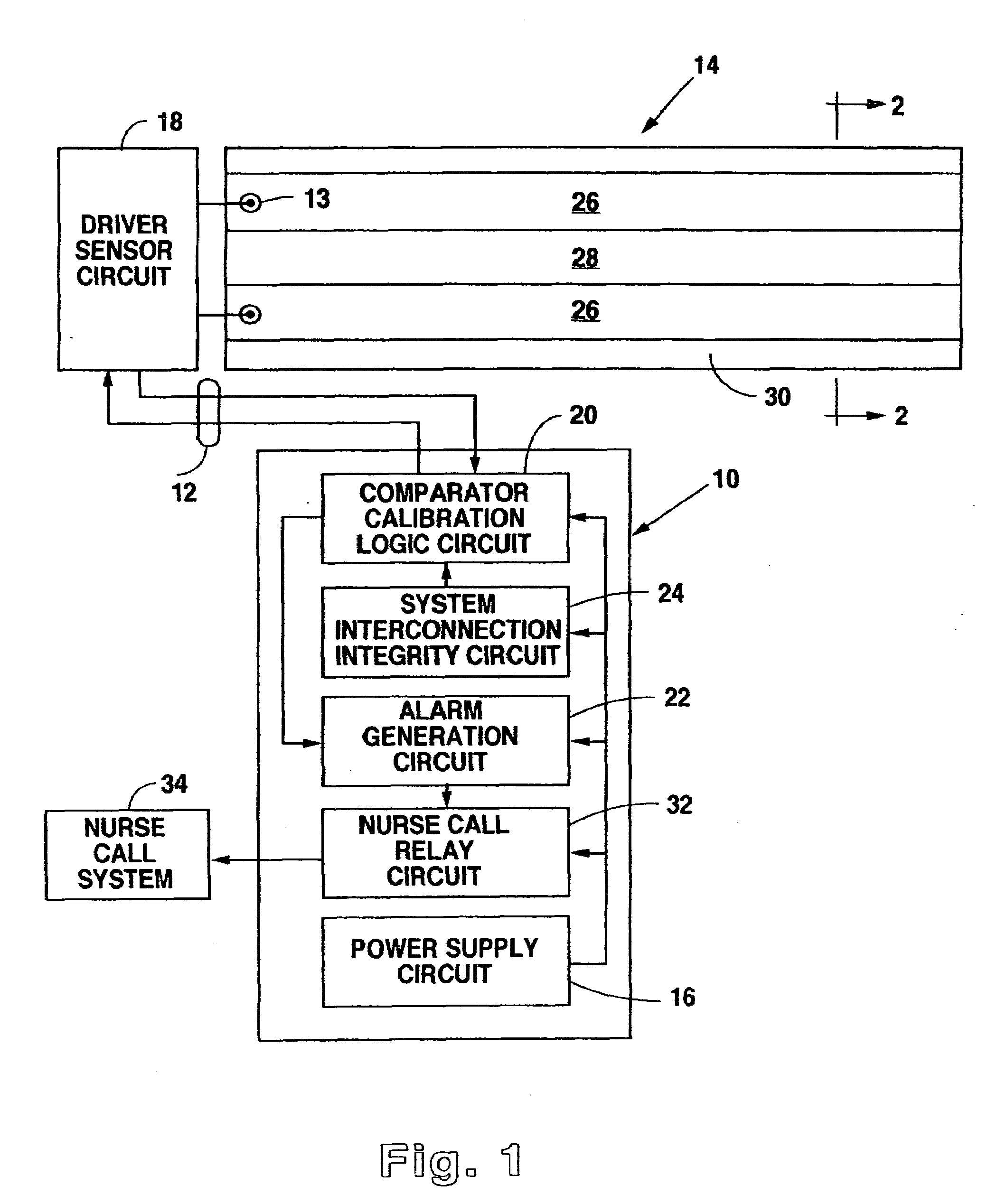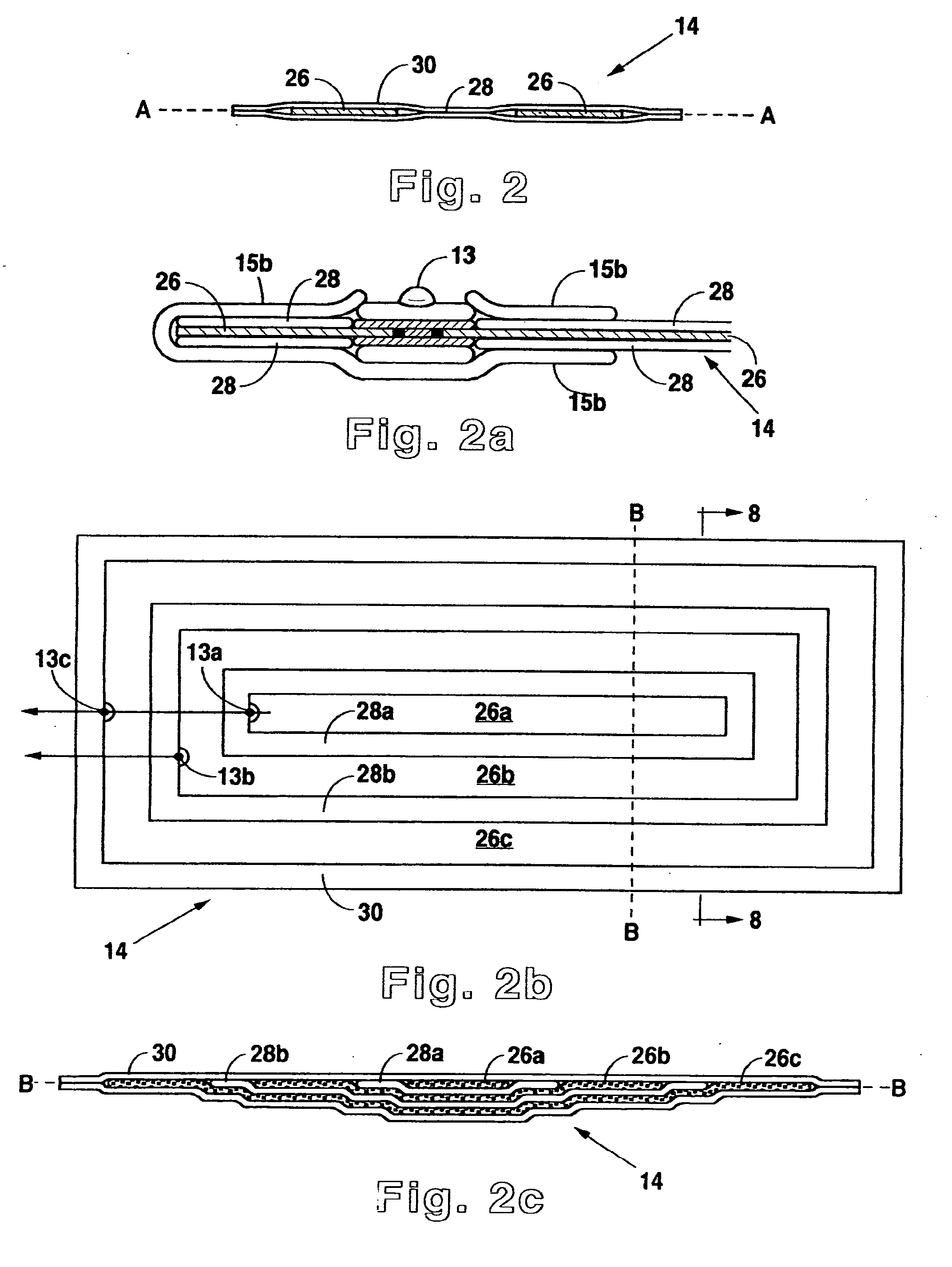Modular Systems for Monitoring the Presence of a Person Using a Variety of Sensing Devices
a module system and sensing device technology, applied in the field of modules for monitoring the presence of a person using a variety of sensing devices, can solve the problems of ensuring certain patients, affecting the service life of sensor elements, and affecting so as to prolong the service life of sensors, reduce patient discomfort, and ensure the presence of patients.
- Summary
- Abstract
- Description
- Claims
- Application Information
AI Technical Summary
Benefits of technology
Problems solved by technology
Method used
Image
Examples
Embodiment Construction
[0056]As generally described above, the device of the present invention has practical application in a number of situations. The device may be used to monitor the presence of a person, or animal, within a pre-defined space. The invention described may be used in hospitals or other medical facilities to monitor the occupancy of medical beds, chairs or other supportive structures whenever it may be useful to determine the status of occupancy of such structures. In addition to its use as a stand alone system in combination with such structures, it is possible that the sensing element capacitive array, through its inherently long service life, could be embedded in or under the surface materials of bed mattress covers and seating surfaces. In such fashion a medical facility would then only have to supply and interconnect the control / monitor module component. Equivalently, if appropriate, the entire monitoring system could become an integral component of an appropriate medical bed or chai...
PUM
 Login to View More
Login to View More Abstract
Description
Claims
Application Information
 Login to View More
Login to View More - R&D
- Intellectual Property
- Life Sciences
- Materials
- Tech Scout
- Unparalleled Data Quality
- Higher Quality Content
- 60% Fewer Hallucinations
Browse by: Latest US Patents, China's latest patents, Technical Efficacy Thesaurus, Application Domain, Technology Topic, Popular Technical Reports.
© 2025 PatSnap. All rights reserved.Legal|Privacy policy|Modern Slavery Act Transparency Statement|Sitemap|About US| Contact US: help@patsnap.com



